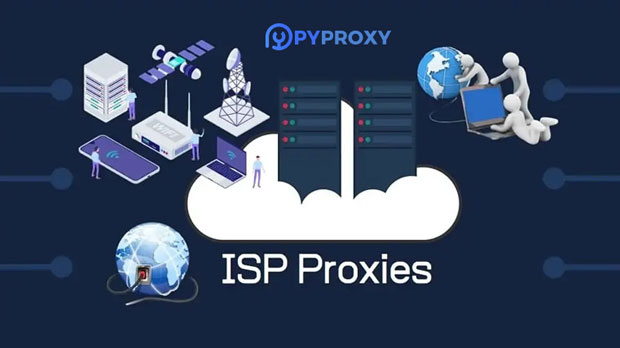The DataImpulse Proxy is a powerful solution designed to enhance data processing capabilities by acting as an intermediary between users and servers. A key feature of this technology is its ability to function across a wide range of devices and platforms. With its robust design, it provides users with an optimal experience whether they are operating on smartphones, laptops, desktops, or any other platform. In today’s diverse technological ecosystem, ensuring compatibility across devices is critical, and DataImpulse Proxy excels in this area. This article will provide an in-depth analysis of how DataImpulse Proxy performs across various platforms, examining its flexibility, performance, and practical benefits for users. Overview of Multi-Device and Multi-Platform CompatibilityThe modern digital landscape is more diverse than ever before, with users accessing services from a variety of devices such as smartphones, tablets, desktops, laptops, and even wearables. Similarly, platforms range from web-based applications to native mobile apps and enterprise systems. In this context, DataImpulse Proxy’s multi-device and platform compatibility is crucial for users who need a seamless experience, regardless of the device they are using.DataImpulse Proxy offers a high degree of compatibility, ensuring that it functions smoothly across these varied environments. Whether the user is on a mobile phone running iOS or Android, or on a PC with Windows or macOS, the Proxy integrates efficiently with the system, offering stable performance. This flexibility makes it a preferred choice for businesses and individuals seeking reliable and consistent service across different devices and platforms.How DataImpulse Proxy Works Across Different Devices1. Smartphones and Tablets Smartphones and tablets have become integral tools for personal and business tasks. As mobile technology evolves, the need for proxies that can manage and optimize data flow on these devices becomes more significant. DataImpulse Proxy ensures that mobile users enjoy fast and secure data exchanges, regardless of whether they are using iOS or Android devices. The proxy adapts to mobile networks, including 4G, 5G, and Wi-Fi, ensuring low latency and high-speed performance. In addition, the Proxy integrates with mobile applications seamlessly, enabling better data management and enhanced user experiences. For mobile developers, DataImpulse Proxy supports app integrations, providing more control over how data is handled, improving security, and offering analytics capabilities that would otherwise be difficult to achieve on mobile platforms.2. Desktops and Laptops Desktops and laptops, whether running Windows, macOS, or Linux, have long been the primary platforms for business and enterprise users. The performance requirements for data transmission on these platforms can be demanding, particularly in corporate environments where large amounts of data need to be processed in real-time. DataImpulse Proxy excels in desktop and laptop environments by optimizing data handling across both wired and wireless connections. It offers high levels of encryption and security to ensure data integrity and confidentiality. Additionally, users can customize their proxy settings, allowing businesses to configure data flow management according to their specific needs. This level of adaptability ensures that DataImpulse Proxy remains highly relevant for both casual users and corporate IT professionals.3. Wearables and IoT Devices The rise of wearables and Internet of Things (IoT) devices has added another layer of complexity to the multi-device ecosystem. These devices, such as smartwatches, fitness trackers, and smart home gadgets, often require streamlined data handling to function efficiently. DataImpulse Proxy has been optimized to support such devices, enabling smoother data flow between wearables and other devices like smartphones or cloud servers. By integrating with IoT systems, DataImpulse Proxy ensures real-time data synchronization, which is crucial for users who rely on wearable technology for health monitoring, fitness tracking, or smart home management. The Proxy’s ability to handle low-latency data transmission makes it particularly valuable in the IoT space, where delays in data can compromise the functionality of devices.Performance Across Different PlatformsDataImpulse Proxy is designed with performance in mind, providing a consistent and high-quality experience across different platforms. This section will discuss how it delivers excellent performance in diverse environments.1. Web-Based Platforms Many users today rely on web applications to conduct business, access entertainment, or manage personal tasks. Web platforms often involve complex data exchanges between clients and servers, and delays can cause significant disruptions. DataImpulse Proxy plays a critical role in these environments by reducing latency, optimizing bandwidth, and ensuring smooth, secure communication between the client and server. Whether accessing cloud services, online games, or streaming platforms, DataImpulse Proxy ensures that users experience minimal buffering, lower latency, and faster load times. The Proxy acts as a bridge that optimizes data routes, improving the overall user experience without compromising security.2. Native Mobile Applications Native mobile apps are increasingly complex, supporting various features like real-time messaging, video streaming, and data syncing. DataImpulse Proxy improves the performance of these applications by providing faster data handling and reducing the load on mobile networks. It optimizes the transmission of data, allowing apps to perform better even under heavy network traffic. For developers, DataImpulse Proxy also offers debugging and monitoring features, enabling them to troubleshoot performance issues in real-time and implement data handling improvements.3. Enterprise Systems In enterprise environments, where large amounts of sensitive data are transmitted across various departments, the need for secure and efficient data transmission is critical. DataImpulse Proxy supports enterprise systems by offering robust encryption and streamlining communication between different business units, reducing the risk of downtime or data breaches. Additionally, DataImpulse Proxy allows businesses to configure proxy settings to align with their security policies, ensuring that corporate data is handled safely and effectively. This makes it an ideal solution for companies that need a reliable, high-performance proxy across multiple platforms and devices.Practical Benefits of Multi-Device and Multi-Platform Compatibility1. Enhanced User Experience One of the most significant advantages of DataImpulse Proxy’s compatibility across multiple devices and platforms is the seamless user experience. Whether accessing data on a mobile device or a desktop, users can expect fast, secure, and efficient data transmission. This consistency in performance ensures that users do not need to worry about their device or platform, which enhances their overall satisfaction.2. Increased Productivity For businesses, the ability to access and manage data efficiently across different platforms is vital for productivity. DataImpulse Proxy ensures that employees can seamlessly switch between devices without experiencing disruptions in their workflow. This is particularly valuable in remote work environments, where employees use various devices, such as laptops, desktops, and mobile phones, to stay connected.3. Cost Savings Businesses that use DataImpulse Proxy can benefit from cost savings in several ways. By optimizing data transmission, the Proxy helps reduce bandwidth usage, which can result in lower operational costs. Moreover, the Proxy’s ability to improve application performance can lead to fewer IT support needs, saving time and resources in the long run.In conclusion, DataImpulse Proxy is an exceptional solution that offers strong compatibility across a wide range of devices and platforms. From smartphones to desktop computers and IoT devices, its ability to deliver high performance and security makes it a highly valuable tool for both individuals and businesses. Its seamless integration across various systems ensures that users experience consistent, reliable service, regardless of the device or platform they are using. Whether for personal use or within a corporate environment, DataImpulse Proxy is a technology that stands out for its versatility, performance, and practical benefits.
Apr 24, 2025
![arrow]()




























































